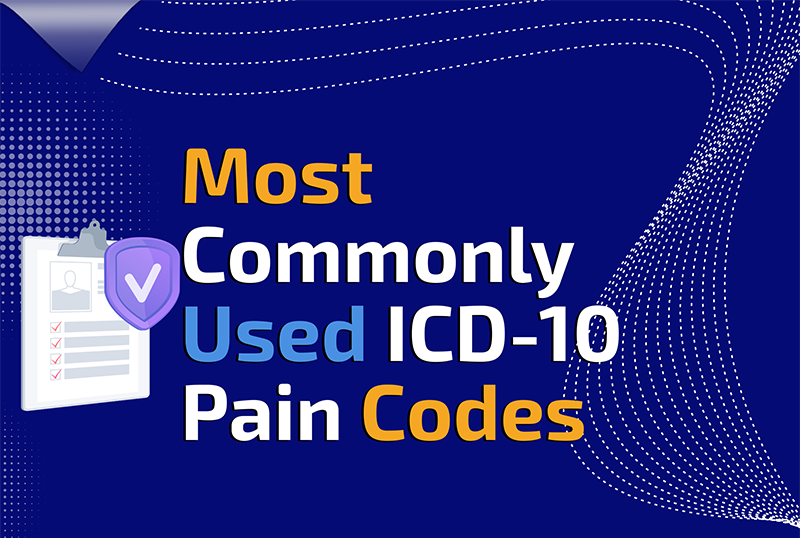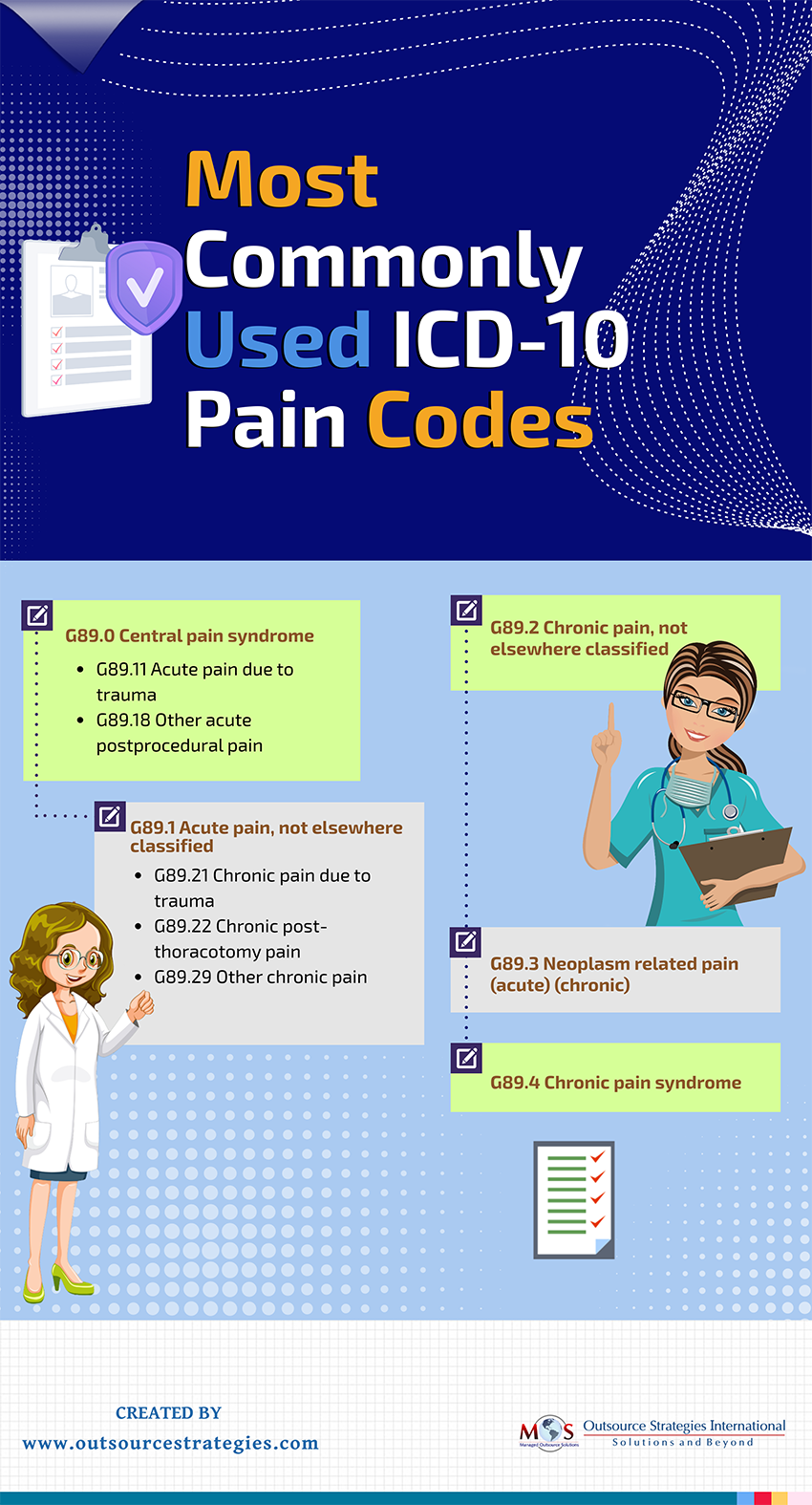When reporting pain, correct code assignment on claims is often a challenge, as there are extensive ICD-10 guidelines on how different types of pain should be reported and the code sequencing process. Coders report different types of pain such as – Acute vs chronic, Traumatic, Postoperative, and Site specific. It is also crucial to know the specific terminology for different types of pain to assign the right code. An experienced pain management medical billing company can ensure accurate coding and efficient claims management for optimal reimbursement.
ICD-10 has more than 162 codes for reporting pain. Pain codes are found in many ICD-10 chapters such as Chapter 6 (G00-G99 – Diseases of the Nervous System), Chapter 7 (H00-H59 – Diseases of the Eye & Adnexa), Chapter 13 (M00-M99 Diseases of the Musculoskeletal System and Connective Tissue), and Chapter 19 (S00-T88 – Injury, Poisoning, and Certain Other Consequences of External Causes). Codes are assigned and sequenced based on the encounter notes and the reason for the admission/encounter. While assigning codes, make sure to use the provider’s documentation.
Check out the infographic below





